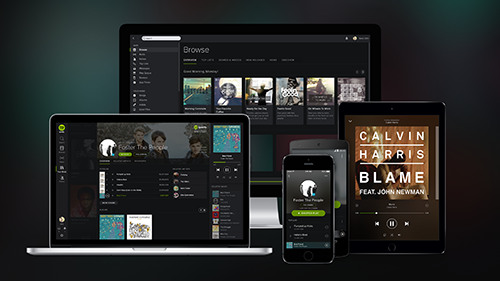The subscription model has been around for years under the presumption they only work for industries such as publishers and gyms. However, we’re seeing subscription models emerge in other markets as more companies catch on to the benefits of having monthly subscribers, from music (Spotify) to television & film (Netflix and Amazon Prime), and now food (Hello Fresh) and coffee (Pact).
These businesses have recognised the benefits the subscription model provides, in not only being able to predict revenue through recurring sales, but also gaining further insight into what their consumers really want, thus creating deeper relationships with these consumers, who in turn are far more likely to remain loyal in the future.
Also consumers are increasingly warming to subscription relationships across a range of different industries. The Economist Intelligence Unit from 2014, reported that 80 percent of customers are looking for different ways to acquire goods and services whether it be through a subscription, leasing, renting or sharing service.
Millennials don’t value owning a product or service, they’re far more interested in having access to it. Why buy a hedge trimmer that you’ll only use once every six months when you could rent it or borrow it for free from a neighbour?
It is this ‘convenience’ aspect of subscription models that is really helping to drive its popularity amongst consumers. Whereas in the past you might have gone to a local DVD hire shop, now Netflix has consumed this market with a flat monthly fee that allows people to rent DVDs whenever and wherever they like, with the click of a mouse. On top of this there’s the added personalisation of Netflix film recommendations based on a customer’s previous choices, which takes tailor-made content to a whole new level of meaning.
How to deliver a successful subscription model?
Before diving in brands must pick out their most valuable customer segments – those they can focus on to build even more profitable relationships. Therefore companies like Close Shave Society shouldn’t be addressing members of the British Beard Club.
Key to effective subscription marketing today is using the latest technology. Improvements in technology have helped global online retailer Amazon to retrofit subscriptions to existing customer choices. Its service Subscribe & Save encourages customers to place recurring monthly orders for products and in return receive up to 15% off. It takes the hassle out of shopping whilst also offering a deal. Amazon also has a second subscription service, Amazon Prime, it promotes heavily which offers access to millions of movies, songs, safe storage for as many pictures as you can save and free one day delivery.
The most effective strategists build feedback into their subscription models. Graze enables its customers to feedback to a series of questions which their customers are willing to do because they realise it will provide them with a more personalised service. And the more you match the needs of the customer the more likely you are to make a sale.
A good subscription model must share information with consumers, to further build relationships with them meaning the quality of your communication is as important as the quantity. Take beauty brand GlossyBox for example. In addition to sending a box of cosmetics, it includes product descriptions, which inform customers of the latest beauty tips, trends and styles. Also inside the box are questionnaires, the feedback from which is then used to tailor each package to the customer for future subscriptions.
Once consumers are engaged and happy they need to be nurtured because if they are pleased with your product or service they are more likely to recommend it to friends. This satisfaction can be amplified by a robust social media strategy. Social media is a great platform for subscription marketers to offer incentives for referrals, or by moving subscribers from one tier to the next.
In terms of customer retention the subscription model really comes into its own, because if one wants to cancel a subscription they first have to open a communication channel, which presents an opportunity to convince them otherwise.
The Future
With technology evolving so fast, so are subscription models. As a result, they are reaching beyond the traditional publishing marketplace and into industries who have never considered this model before.
This growth is set to be driven by the internet of things world in which we increasingly live in. Expect to see different industries evolving embracing this model. For example, your Phillips dishwasher could have a subscription arrangement with Bold washing tablets.
But remember, in order to create a successful subscription service you must build real relationships with real people through ongoing communication and customised promotions based on your knowledge of customers.






